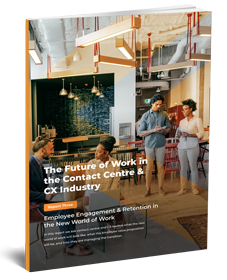When we as employers look at ways of making our organisations more attractive to candidates, and when we look at how to better retain our existing staff, we focus on the employee experience. But let’s think about that a little.
What we are really focussing on there is the experience an employee has while they are at work. This is only natural as it is what we, as managers and leaders, are somewhat in control of.
But it is far from the overall picture. Every employee also has a life and interests outside of work. For most people these non-work things will actually be much, much more important.
What we need to focus on instead in our employees’ relationship with work. This goes beyond their experience at work and their relationship with their employer. It also encompasses their co-workers, managers, and the environment they work in. But it is also about how work impacts the rest of their life. Does working for you add to an employee’s life or detract from it?
We should be asking ourselves these types of questions about each of our employees:
- How do they feel about Monday morning on a Sunday evening?
- Why do they do this job? If they didn’t need the money, would they still do it?
- What do they get out of work? How does it fit into their life?
To paraphrase JFK, maybe you need to start asking what you can do for your employees, rather than the other way around.
The new value proposition, as we will see, turns work from being an impediment to the life an employee wants to leave, to being the reason they can live that life.
When you’re recruiting you need to have a competent and professional employee value proposition. It can include things like only 2 days a work in the office as you need at least match what your competition is offering. It seems to me that used to pay lip service to the employee value proposition – so we would have some funky videos to show what it’s like to work there. But now it needs to be so much more than that. There is so much competition today, I really feel like I’m selling the role rather than recruiting for it. Just like selling anything else, it’s much easier when you have a great offering.
Director of Client Services, Global Insurance Company
From a ‘job until’ to a ‘job because’
As we mentioned earlier, work plays an important role in most people’s personal identity. When your employees are asked what they do for a living, and they reply call centre agent or customer service representative, what do you imagine that does for their self-esteem?
Whatever the reasons, for many people a call centre job is seen as something they do until they can find something else. It’s a job to do until they get the job they really want. Or until they finish Uni. Or until they save enough money to go travelling.
The problem is that a call centre job is not seen as a destination role. For many employees it is a stepping stone to something else.
We have been hiring students, overseas travellers, and young people in transition phases of their life because we’ve been offering ˮa job untilˮ. When you shift to ˮa job becauseˮ you attract people seeking more stability in their life. These can include more mature workers, particularly women. Very flexible employers are recruiting more and more semi-retired, older people who want to work part-time. The job doesn’t get in the way too much, keeps them active and socially connected, and also funds all those things they dreamed of doing in retirement.
Tim Buzza, Founder & Chief Customer Officer, Attune Work Solutions
This is a cultural issue as much as anything else. In some countries – particularly those like India, South Africa, or the Philippines, where western companies often outsource their customer service – working in a contact centre is seen as a desirable career that usually attracts extremely well qualified graduates.
It may also be an issue of pay. Many traditionally blue collar jobs are now higher paying, offer more stable employment, and better skills development without the need for an expensive University education. For entry level contact centre roles, employers are also competing against the hospitality, retail, and travel sectors for similar types of educated, empathetic, customer service-focussed individuals.
We had never hired part-time or fully remote staff before, and it has opened up new talent pools for us. We have people on the Sunshine coast and in regional areas who are fully remote. They aren’t tied to a desk 5 days a week, and they tend to be a little more senior in age. Right now we have a 2 hour from the office catchment area, which means we can get you in from time to time for additional support. Initially we don’t try to teach them everything, and only train them in one skill. Once they get comfortable on the phone they start learning all the other things everyone else would learn. Getting them started more quickly has been helpful for retention in those first 3 months.
Head of Member Services, Retirement fund
Putting it all together
Under the new value proposition, your main role as an employer is to enable your employee’s wider life, as well as meet their professional needs. A contact centre is one of the few types of workplaces that can tick all the boxes for employees in this new world of work. While the specifics of the job roles offered will vary from company to company, the new value proposition will encompass a commitment to:
- Hybrid and remote working, as well as fully work-from-home opportunities.
- Flexible working hours, including the ability to choose your own shift, split shifts, work part-time or full-time, and even new flexible models like 4-day weeks.
- A culture that promotes social interaction (remotely or face-to-face) and fosters a sense of community and common purpose.
- Ongoing learning & development for in-demand skills such as analytics, coding, finance,
- Promotion paths into management for those that want that and sideways career paths into a variety of fulfilling support roles.
Delivering the above value proposition enables you to open your contact centre roles to previously untapped talent pools – including retirees, semi-retirees, parents returning to work, and people outside the major CBDs. In turn that reduces your reliance on your traditional pools which can help solve your current candidate shortage and attrition challenges.
How to deliver it
Bringing the new employee value proposition to life requires a change to how you recruit, onboard, train and manage your contact centre staff.
Recruitment: Instead of focussing on the specific functions of the job role, the qualifications and experience needed, and other details such as the hours and place of work, your recruitment messaging should talk about the benefits to your target audience of your employee value proposition. Rather than telling candidates what you expect them to do for you, you will instead explain what you can do for them. This messaging should run through your job descriptions, job ads, and come out during the interview and assessment process. |
Onboarding: This is your opportunity to show your new employee that you care. Make the reference checking process and collecting paperwork as easy as possible – there are plenty of apps you can use. Your first mission is to create a bond with the company so send a welcome pack before they start work. Set them up to work from home right away with a laptop, internet connection, and ensure they have a comfortable place to work from. |
Training: The faster you get a new member of staff to competence the less likely they will be to leave in those all-important first 30 days. We recommend training them to handle less complex interactions to begin with so they can move to live interaction handling as quickly as possible. This builds their confidence and their connection to your brand. You can then train them in more complex interactions as they get more comfortable. If you recruited them for a remote working role then all training should be remote. If for a flexible, hybrid role then training should be split between the office and remote. |
Scheduling: You need to be able to provide genuine flexible working, which means empowering your employees to take control of when they work, as well as where they work. This is going to mean some changes to your workforce management, and may potentially require an update to your WFM software. Whether you choose to allow shift swapping, shift bidding, or shift splitting, some combination of these will give employees greater control over how work fits into their lives. |
Flexible working: Whatever you promised your new employees in your job advert you need to deliver. If you need people in the office for a number of days per week make sure there’s a good reason for it, such as team days and collaboration sessions. Nothing annoys employees more than travelling for an hour to the office only to sit and do their work alone while the rest of their team is at home. The new value proposition means you need to treat people as individuals and empower them to make choices. So don’t make blanket rules on how many days they need to be in the office, and even which days – let them decide as much as possible. |
Free Report
Download our latest free report "Employee Engagement and Retention in the New World of Work" for a deeper dive into these topics.


